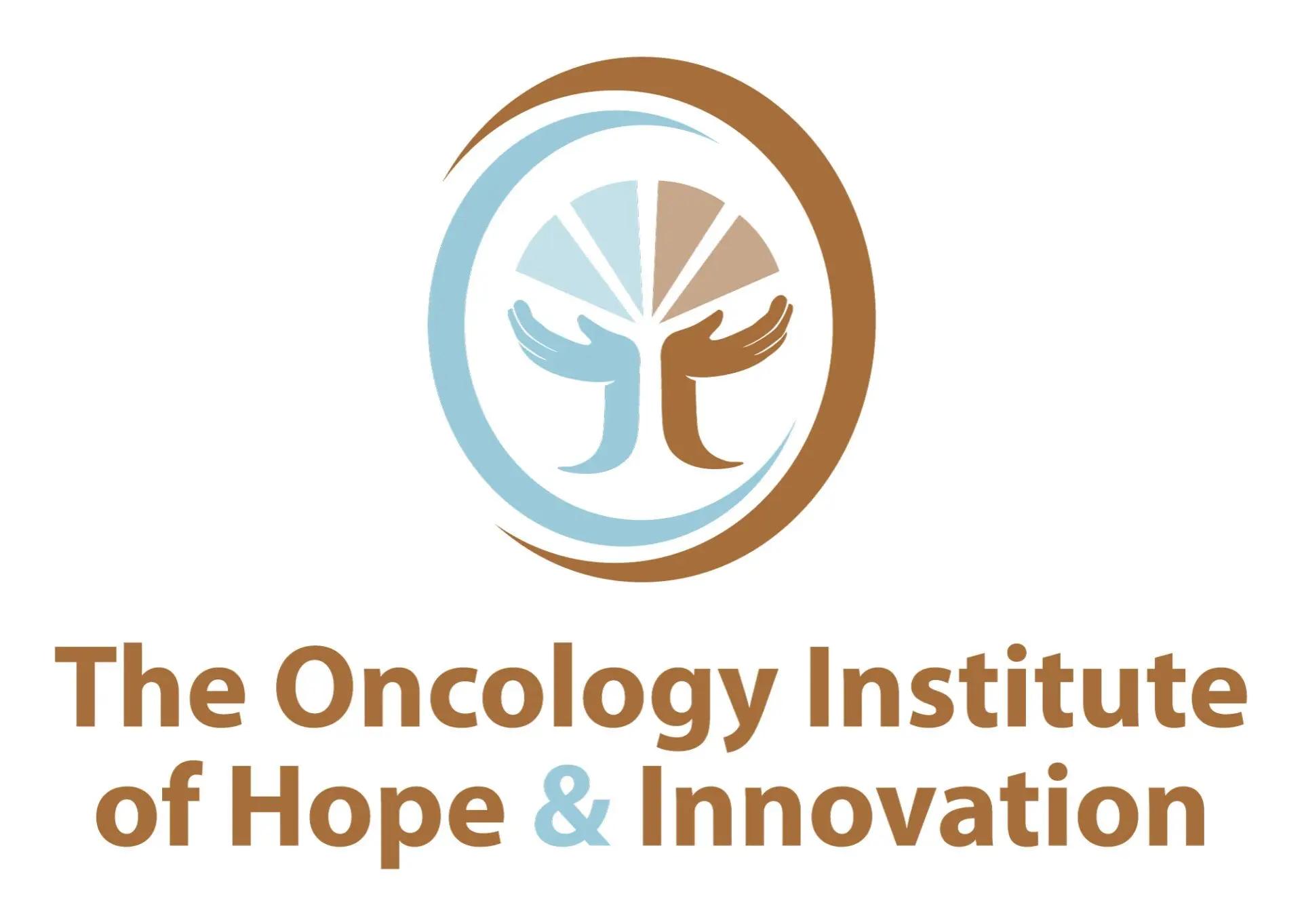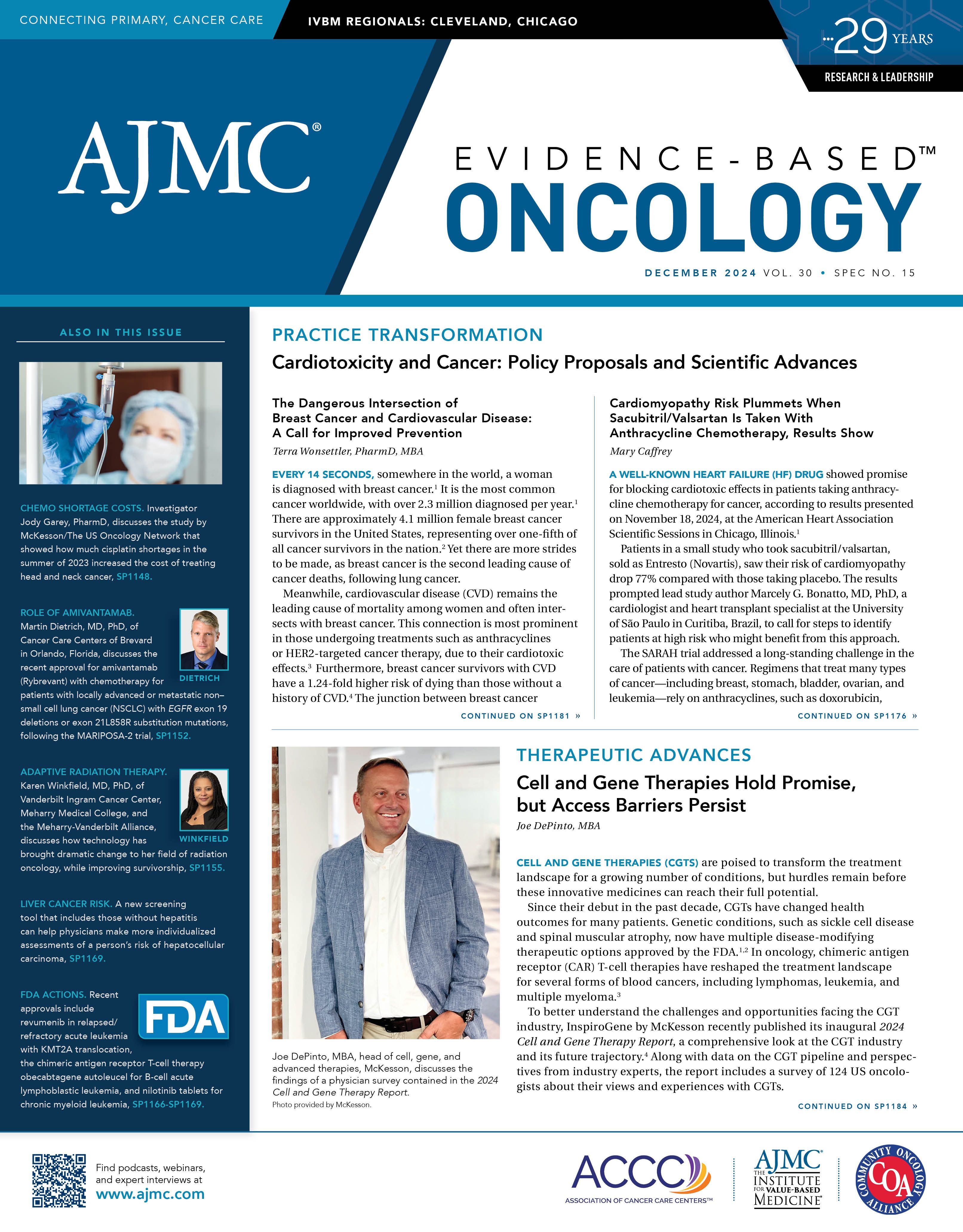Publication
Article
Evidence-Based Oncology
Driving Value in Cancer Treatment Through Care Models and Collaboration With Primary Care
Author(s):
Key Takeaways
- The fee-for-service model in oncology misaligns incentives, increasing costs and creating variable clinical pathways.
- TOI's value-based care program reduces inpatient admissions and emergency visits, improving overall cost efficiency.
Coverage from the Institute for Value-Based Medicine event in Miami Beach, hosted with The Oncology Institute for Hope and Innovation.
As cancer treatments improve, the population of patients being treated for cancer or who have a prior cancer diagnosis is increasing. With the way most cancer practices are reimbursed in the fee-for-service model, there’s a misalignment of incentives, which ends up driving up oncology spend, noted Daniel Virnich, MD, MBA, FACHE, CEO of The Oncology Institute (TOI) of Hope & Innovation and the chair of an Institute for Value-Based Medicine event from The American Journal of Managed Care, taking place at the Fontainebleau Miami Beach, Florida, on October 24, 2024.

“What we’ve created, unfortunately, is an industry that has a massive economic burden on the US and the US health care system with accelerating growth and, unfortunately, highly variable clinical pathways,” Virnich said in his introduction.
In the US, cancer spending tops $200 billion annually.1 Doing the right thing for patients can drive a lot of value, he said, but the average community-based practice is approximately 70% adherent to the National Comprehensive Cancer Network guidelines due to the misalignment of incentives.
In oncology, there are usually multiple therapeutic options for most cancer types and there can be a large difference in cost between the most and least expensive therapies. Ultimately, patients pay the price, and the high cost of therapeutics leads to financial instability for patients, as well as skipped or delayed treatment, Virnich noted.
At TOI, the cancer care program drives value by combining care management and supportive care to help patients manage the complex cancer journey. In addition to the high-value cancer care program, TOI focuses on effective treatments that are the most clinically appropriate for a patient based on their diagnosis and collaboration with palliative and hospice care.
The cancer care program has reduced inpatient admissions by 30% compared with benchmark care, fewer emergency department visits, and improved total cost of care.2
The rest of the evening featured 3 panels. First, there was a clinician panel that discussed defining value in oncology, the role of clinical trials, and the challenges in implementing value-based care.
“One of the things that gets very confusing when you speak about value-based care is that everybody has a different definition of value,” Yale Podnos, MD, MPH, FACS, chief medical officer of TOI, said in an interview.
He moderated the discussion with Roberto Ochoa Planchart, MD; and Edgardo S. Santos Castillero, MD, FACP, FASCO, both based in TOI’s Miami practice. The panel also covered the time-intensive nature of value-based metrics and the evolving role of academic institutions in value-based oncology care.
The second panel of the night brought together leaders from health plans in Florida, who discussed the shift toward targeted and immune therapies. Jordan McInerney, MHA, of TOI, moderated the discussion with Kim Hua, MBA, market vice president, Cigna; Elena Newman, ACMA, CGMA, Florida Medicare president, Elevance Health; and Susan Griffin, MSM, Doctors Healthcare Plans.
“…There is still untapped potential in value-based care when it comes to oncology, where we [have] just barely scratched the surface with capitation models, but there’s more work and adoption [to do] around other concepts like bundled payments, as an example, or shared savings programs,” Newman said in an interview.
The panel also discussed the need for preventive measures, such as early screening and diagnosis, which can significantly improve the prognosis for patients while also reducing the overall cost of care over time.
The final panel of the night covered collaboration between primary care providers (PCPs) and oncologists to manage patients with cancer. Ray Parzik, MS, vice president of business development at TOI, moderated the discussion with Raul Daza, MD, chief medical officer at Sanitas Medical Center; Robert Hart, MHA, network contracting and sales executive, Carelon Health, a wholly owned subsidiary of Elevance Health; and Paul Kaplan, MD, chief medical officer at MaxHealth.
Parzik noted that PCPs are the pioneers and champions of value-based care as the earliest adopters. When he was at the insurer Florida Blue 15 years ago, there were not value-based care models, and the health plan started with primary care to build out a patient-centered medical home. This model became a foundation of care with a team-based approach led by PCPs. The whole-person care model was built onto that and addressed all the needs of patients, not just the “problem of the moment.”
All of that is still true today, but Kaplan thinks the next frontier is PCPs going back to the model of the 1950s, when doctors made home visits. “There was a magic about that time, and the magic was that…doctors talked to each other,” he said.
PCPs have the benefit of years of knowledge of a patient and a long history of care that an oncologist doesn’t have when the patient first shows up after a cancer diagnosis. When MaxHealth sends a patient to TOI, the doctor doesn’t just send over the medical note, they send over the patient’s Patient Health Questionnaire-9 (PHQ-9) to provide a psychological profile. This gives the staff at TOI a sense of the patient’s history precancer.
“Because everyone, when they’re hit with a cancer diagnosis, and you then do a PHQ-9, you’re going to have a different score,” Kaplan said. “And it’s important to understand what the cancer is doing to that patient and to their family.”
Daza echoed that value-based care models have to take care of the whole patient, including social determinants of health, physical health, and behavioral health. Once that care model is created, a payment model can be created to align with it and sustain the model. For a primary care organization, risk stratification of the population and preventive medicine is not enough.
“Preventive care is really important, and early intervention is important, but [so is] understanding that we have 10% of our population that is responsible for 90% of the medical costs,” Daza said. To create advanced primary care models, Sanitas is partnering with specialty care organizations.
To improve risk stratification and better understand which patients will need the hospital or use the emergency department in the next 30 days, MaxHealth has been putting bands onto patients that measure unique energy output on a normal day and pick up changes, such as when they’re becoming septic or having a chronic obstructive pulmonary disorder exacerbation. In the example of sepsis, the band has shown a change in energy utilization 8 days before the lab tests showed sepsis.
“The question becomes, what do you do with this information?” Kaplan asked. PCPs often try to abdicate responsibility of a patient when they’re going through cancer treatment. “But there is still a role for the PCP in terms of…surveillance of their population of people with cancer getting care, because they can be an early warning system and then involve the oncologist.”
Investing in these programs and partnerships helps to bend the cost curve of oncology care, Hart said. These investments help drive meaningful performance. In addition, he said putting together risk-based contracts is meaningful, and he thinks there will be more risk-based entities.
Part of the value that comes through partnerships between primary care and oncology is the expertise that oncology brings.
“There’s a lot of waste through ignorance, and you cannot expect a primary care doctor to know everything,” Kaplan said. “And many of the TOI oncologists are on my speed dial.”
These relationships can help PCPs guide patients away from expensive procedures and treatments that won’t actually prolong life or improve quality of life. “It’s a good way of eliminating the waste,” he said.
Despite the economics side of things, trust between the providers is crucial for these relationships. Then, the same thing has to happen with patients, explaining why these relationships are in place and how they got forged, Daza said.
Explaining this relationship will help allay the 3 main questions a patient has when their PCP sends them to another doctor, Kaplan said. First, will my doctor be in communication with the specialist? Second, will I get the right care? Third, if standard therapies don’t work, are you sending me to someone who has access to clinical trials?
If you’re able to answer these questions, the patient will trust the specialist the PCP sends them to. “The shiny Miami Cancer Institute or Moffitt [Cancer Center] or Mayo [Clinic], or whoever it might be, begins to dissipate,” Kaplan said.
References
1. Chow RD, Bradley EH, Gross CP. Comparison of cancer-related spending and mortality rates in the US vs 21 high-income countries. JAMA Health Forum. 2022;3(5):e221229. doi:10.1001/jamahealthforum.2022.1229
2. High-value cancer care (HVCC) program. The Oncology Institute of Hope & Innovation. Accessed November 19, 2024. https://theoncologyinstitute.com/cancer-treatment-options/high-value-cancer-care/






